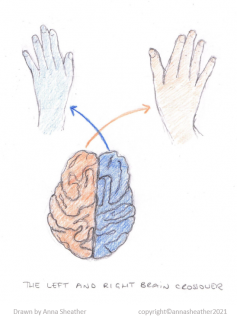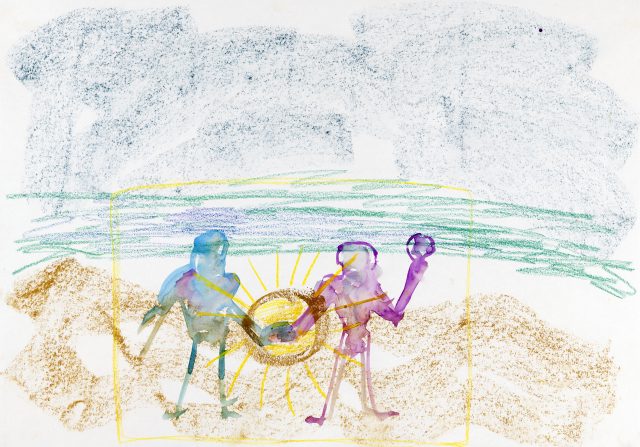When coaching we know the importance and power of frame shifts to enable our clients to make positive and lasting changes. The ability to make shifts comes from the right hemisphere.
Right vs left hemisphere
Iain McGilchrist, in his book The Master and His Emissary, explains that all our new experience comes to our right hemisphere first and then once it is familiar enough it is passed to our left hemisphere where it is processed, analysed and re-presented. The right hemisphere experiences things in constant change and the left hemisphere creates a stable world for us to live in through categorising, labeling and creating rules. A good example of this difference is a river. The reality is that a river is in constant change, from moment to moment it is never the same. The water is in constant motion; surface patterns change and its shape constantly changes as its banks are eroded or silt deposits are laid down. This constant change and uniqueness of things is what the right hemisphere experiences. The left hemisphere, in contrast, analyses, labels and categorises the new experience and has given us the label of ‘river’ that has certain rules attached to it which enable us to categorise other experiences as a ‘river’.
 It is the right hemisphere’s openness to change and to the new which in turn enables it to be open to the peripheral and thinking outside the box. The right hemisphere is therefore more capable of a frame shift. In contrast, the stability created by the left hemisphere, whilst enormously important, can prevent the left hemisphere being open to experiences and ideas that don’t fit within its analysis, labels and rules and therefore prevent frame shifts. The left hemisphere can also actively ignore and block data and experiences that don’t fit with its stable world.
It is the right hemisphere’s openness to change and to the new which in turn enables it to be open to the peripheral and thinking outside the box. The right hemisphere is therefore more capable of a frame shift. In contrast, the stability created by the left hemisphere, whilst enormously important, can prevent the left hemisphere being open to experiences and ideas that don’t fit within its analysis, labels and rules and therefore prevent frame shifts. The left hemisphere can also actively ignore and block data and experiences that don’t fit with its stable world.
McGilchrist also explains that the right hemisphere will come up with a number of different solutions and all can be held whilst alternatives are explored. By contrast the left hemisphere will focus on the one that fits best with what it already knows and tends to stick with it.
Coaching for frame shifts through art
It makes sense, knowing the importance of frame shifts and to give our clients greater opportunities to create them, to coach in a way that accesses our clients’ right hemispheres’ perceptions and experiences of the world. Coaching with art works with the right hemisphere. Through the imaging and creative process, art actively quietens the left hemisphere, allowing for more right hemisphere perceptions to come to the fore. These perceptions are captured within a whole image, allowing clients to bring in new and peripheral experiences, and other possibilities holding them together for exploration. The language of the image gives the silent right hemisphere a voice and increases the opportunities for frame shifts.
Nearly all my art based coaching sessions have had frameshifts within them; giving clients the opportunity to see something new, something different – shifting their thinking, changing their perception and allowing them to move forward.
An example
A lovely example of this was a client exploring her new relationship. She created and image that in the session raised lots of questions for her. Then post the session she had the following frame shift.
‘Somehow, as I look at the picture again…those figures each feel strong in themselves, firmly grounded, standing strong in themselves, yet connected in a very loving way. Maybe that’s the reason that I didn’t paint them too close together?’
The image making process and exploration enabled my client to see their relationship from a different perspective. A frame shift.

References
McGilchrist, The Master and His Emissary, 2007 Yale (pages 40 – 42 & 79 – 83)

